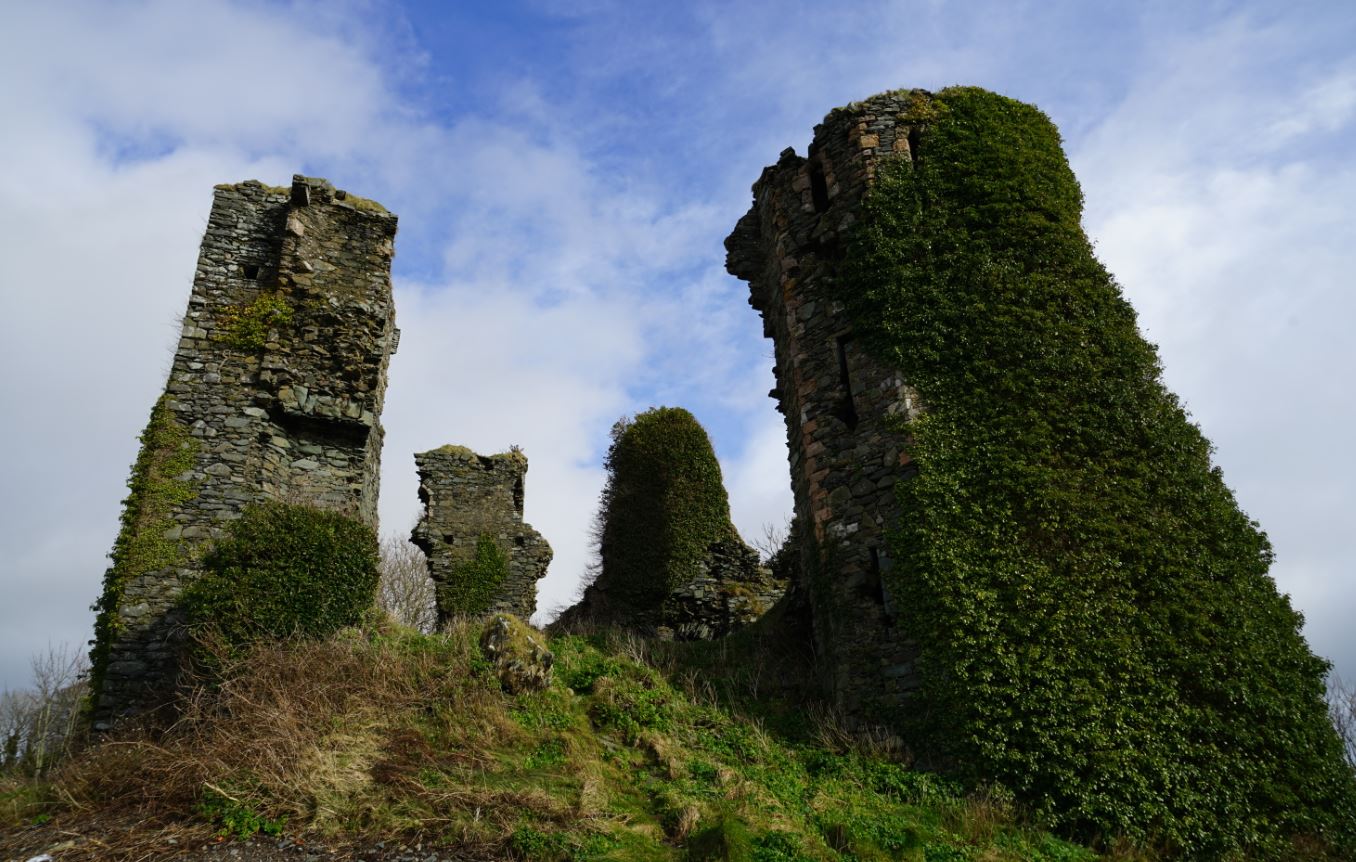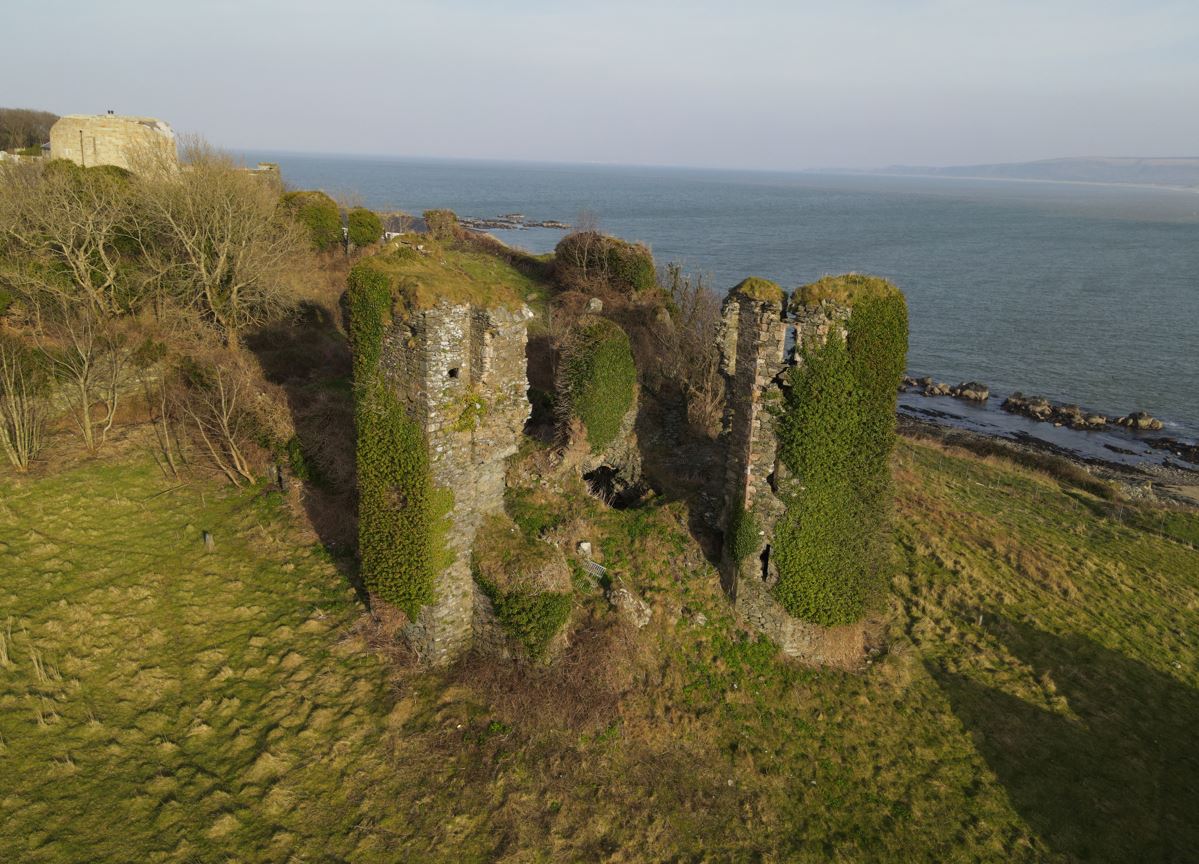1333 - the murder of William de Burgh, the Brown Earl
The execution of Roger Mortimer
in November 1330 meant that young king Edward III took back control of the government in England and Ireland. In the process, many of the grants made during Mortimer’s short regency were revoked. The man appointed to take control of matters in Ireland was Sir Anthony Lucy, who had survived the Battle of Brannockburn in Scotland in 1314, but who had no previous connection with Ireland. His appointment as justiciar of Ireland would be the catalyst for the bizarre events that would soon follow.
In 1326, Richard de Burgh, the Red Earl of Ulster, retired to Athassal Priory, Co. Tipperary, where he died shortly later. He was succeeded by his grandson William de Burgh (son of John de Burgh and Elizabeth de Clare), who became known as the Brown Earl of Ulster. The Brown Earl, who had also inherited the family estates in Munster, was not happy to see the recent elevation of Maurice fitzThomas as Earl of Desmond. Also of concern to the Brown Earl was the fact that his cousin, Walter de Burgh, had been undermining his authority in Connaught, and he became suspicious that his cousin wanted to take control of these estates for himself. With the return of the king, the Brown Earl was quick to seize the opportunity provided by the new political landscape.
As a reward for his key role in defeating Edward Bruce at Faughart in October 1318, John de Bermingham was given the newly created title of earl of Louth. He was married to Aveline de Burgh, a daughter of the Red Earl, and his family traced their Irish origins to 1170 and the arrival of Strongbow. They subsequently became associated with lands in Offaly, and also in Connaught where the family had been at the forefront of the 1235 conquest. Therefore, when John de Bermingham was granted the newly created earldom of Louth in 1319, he effectively acquired lands where his family had no previous associations or connections. This created a lot of local resentment, and eventually to his murder at the hands of the local Anglo-Norman gentry in June 1329, in a massacre that saw a 160 of his family and followers killed, including Cam Ó Cearbhaill, a celebrated timpanist and harpist and twenty of his fellow musicians. John’s death brought an end to the earldom of Louth, but his Connaught estates passed to his brother William de Bermingham, who became a central figure in 1331 in what the authorities described as a plot, by a small group of conspirators, to make the Earl of Desmond king of Ireland.
For Maurice fitzThomas, the first Earl of Desmond, trouble had started even before the fall of Roger Mortimer. Maurice was implicated in colluding with Brian Bán Ó Briain of Thomond, who had killed James Beaufo, the sheriff of Limerick, in April 1330. The context of the killing appears to have been raiding spree of the Brown Earl’s lands in Tipperary and it was believed that the earl of Desmond was attempting to undermine de Burgh in Munster. Maurice was arrested and imprisoned. Walter de Burgh used this as an opportunity to retaliate and raid Desmond’s lands, prompting Maurice to escape from prison. Mortimer ordered him to appear before him, but Desmond refused, and within weeks Mortimer was hanged. Maurice now faced the real possibility of losing all that he had gained from Mortimer, and despite his newfound position, he did not have the same royal connections with the court of Edward III as William de Burgh, the Brown Earl. He was arrested at Limerick in August 1331, and subsequently brought to Dublin Castle once again.
One of the many charges that were brought against him was that in 1327 (before he had been made earl of Desmond), at a meeting in Kilkenny, he had conspired with others to make himself king of Ireland. Those named as supporting his claim to an Irish throne were Thomas fitz John (second earl of Kildare), John de Bermingham (earl of Louth), James Butler (soon to be first earl of Ormond), Walter de Burgh (Connaught cousin of the Brown Earl), Brian Bán Ó Briain of Thomond and Richard Ledrede, bishop of Ossory who had led the witch hunt against Alice Kyteler
three years earlier. The consensus among historians is that the allegations were entirely fabricated. Whether the newly appointed justiciar, Sir Anthony Lucy, was aware of the spurious nature of the claims is unclear, but there is little doubt that he took them very seriously. The justiciar acted immediately and the subsequent investigations led to a series of arrests of the supposed co-conspirators.
With the earl of Louth by now dead, the justiciar arrested his son William de Bermingham and his son Walter at Clonmel in February 1332. In April they were moved to Dublin Castle, where Desmond had been imprisoned since the previous year. In November 1331, the Brown Earl had his cousin Walter de Burgh arrested and initially imprisoned him at Carrickfergus Castle before transferring him to Northburgh Castle overlooking Lough Foyle, beside Greencastle, Co. Donegal. Ironically, the construction of this castle in 1305 by the Red Earl of Ulster may have sown the seeds of discontent in west Ulster that would create sympathies here for the invasion by Edward Bruce ten years later. Early in 1332, Walter de Burgh died while imprisoned at Northburgh Castle, allegedly from starvation. This was an ominous sign for the men who were imprisoned in Dublin Castle. In July 1332, William Bermingham plotted an elaborate escape from Dublin castle. This was foiled when the authorities learned of it and Sir Anthony Lucy had him executed.
Remarkably, the man at the centre of the controversy, the earl of Desmond, would live to see another day. He remained imprisoned until May 1333, when he was brought to the Priory of the Holy Trinity in Dublin (now Christ Church) where he ceremoniously swore loyalty to Edward III. He was allowed to keep all the lands he held before his arrest and, more importantly, he retained his title as earl of Desmond. He was released on 5th June, 1333 and the following day the Brown Earl of Ulster was murdered at the hands of Robert de Mandeville. It is no coincidence that Robert’s mother, Gyle, was a sister of Walter de Burgh who had died in Northburgh Castle at the hands of the Brown Earl.
The death of William de Burgh, the Brown Earl of Ulster, would have a significant impact on the political landscape in Ireland. He had one child, Elizabeth, who was only a baby when her father was murdered. In 1352, she married king Edward III’s son, Lionel of Antwerp, later duke of Clarence, who would briefly become a central figure in Irish history in years to come. The descendants of William de Burgh who first arrived in Ireland in 1185
had dominated the political scene in Ireland for nearly 150 years. The death of the Brown Earl in 1333 without a male heir brought this to a sudden end. The family were by no means written out of the Irish history books, but they would never again dominate the Irish political scene as they had between 1185 and 1333. Instead, the scene was now firmly set for the earls of Desmond, Kildare and Ormond to dominate politics in Ireland for the next two centuries. However, the immediate impact of the murder of the Brown Earl was that the English colony in Ulster lost its resident Anglo-Irish earl. The title would live on, but the future earls never resided in Ulster. As a result, the north came under increasing control of the Gaelic lords and would remain so until the end of the 16th century.



